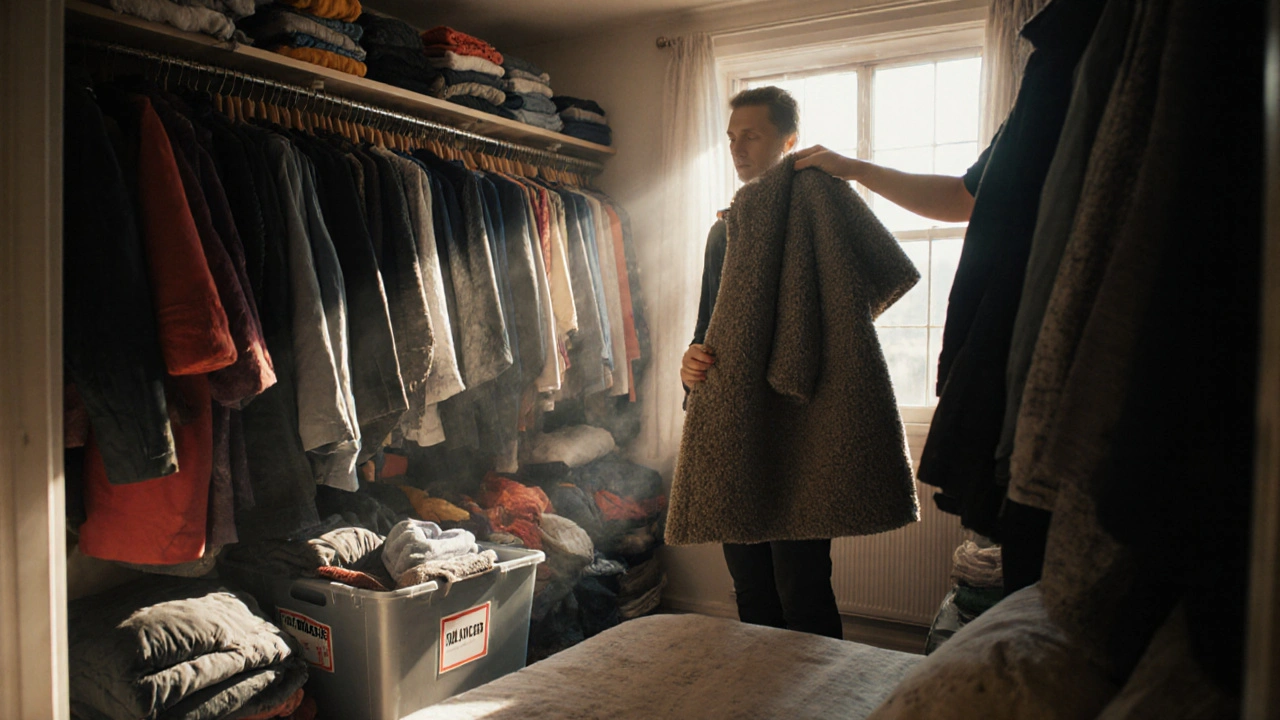Reuse Wardrobe: How to Wear What You Own and Reduce Fashion Waste
When you think about a reuse wardrobe, a system where you wear, mix, and rewear existing clothes instead of buying new ones. Also known as clothing reuse, it’s not about being frugal—it’s about being intentional. Most people own way more than they realize, yet still feel like they have nothing to wear. That’s not a style problem. It’s a habit problem.
A capsule wardrobe, a small collection of versatile, high-quality pieces that work together. Also known as minimalist wardrobe, is the foundation of a reuse wardrobe. But having 20 great items means nothing if you only wear five of them. The magic happens when you learn how to pair, layer, and recontextualize what’s already in your closet. A blazer from last winter? Try it with jeans and sneakers instead of a skirt. That dress you only wore once? Add a belt, change the shoes, and it’s a whole new outfit. This isn’t fashion theory—it’s what real people do in cities like Chicago and Portland, where seasons change and budgets don’t.
Reusing your wardrobe isn’t just about saving money. It’s about cutting down on the hidden damage of fast fashion—water waste, chemical runoff, and landfills full of barely-worn clothes. Every time you choose to wear something you already own, you’re saying no to a new item’s carbon footprint. You’re not just styling an outfit. You’re making a small but real choice for the planet. And the best part? You don’t need to buy anything new to start. You just need to look at your closet differently.
People who stick with a reuse wardrobe, a system where you wear, mix, and rewear existing clothes instead of buying new ones. Also known as clothing reuse, it’s not about being frugal—it’s about being intentional. Most people own way more than they realize, yet still feel like they have nothing to wear. That’s not a style problem. It’s a habit problem.
A capsule wardrobe, a small collection of versatile, high-quality pieces that work together. Also known as minimalist wardrobe, is the foundation of a reuse wardrobe. But having 20 great items means nothing if you only wear five of them. The magic happens when you learn how to pair, layer, and recontextualize what’s already in your closet. A blazer from last winter? Try it with jeans and sneakers instead of a skirt. That dress you only wore once? Add a belt, change the shoes, and it’s a whole new outfit. This isn’t fashion theory—it’s what real people do in cities like Chicago and Portland, where seasons change and budgets don’t.
Reusing your wardrobe isn’t just about saving money. It’s about cutting down on the hidden damage of fast fashion—water waste, chemical runoff, and landfills full of barely-worn clothes. Every time you choose to wear something you already own, you’re saying no to a new item’s carbon footprint. You’re not just styling an outfit. You’re making a small but real choice for the planet. And the best part? You don’t need to buy anything new to start. You just need to look at your closet differently.
People who stick with a reuse wardrobe don’t wait for trends. They don’t feel guilty about wearing the same jeans twice. They know that style isn’t about novelty—it’s about how you wear what you have. In this collection, you’ll find real strategies: how to audit your closet like a pro, how to mix old pieces with new energy, and how to stop feeling stuck in a cycle of buying and regretting. You’ll see how others turned their clutter into curated looks without spending a dime. And you’ll learn why the most stylish people aren’t the ones with the biggest closets—they’re the ones who know exactly what to do with what’s already there.
Seasonal Wardrobe Rotation: How to Reduce Clothing Purchases by Reusing What You Already Own
Posted by Eamon Lockridge on Nov, 16 2025

Learn how seasonal wardrobe rotation helps you reuse what you already own, cut clothing spending in half, and build a smarter, more sustainable closet-without buying new clothes every season.
